Lee College is a community college located in Baytown, Texas, USA. The following is a detailed introduction about it:
1. School Overview
Historical Background: The school has a long history and has been rooted in the local education field for many years, making continuous contributions to the community's education.
Geographical Location: Baytown is part of the Houston metropolitan area, which enables Lee College to make full use of the resources of the big city and also provides students with abundant internship and employment opportunities. The campus covers an area of about 40 acres and has convenient transportation around it.
2. Academic Education
Professional Settings
Vocational and Technical: Provides professional courses such as welding technology, automotive technology, and heating, ventilation and air conditioning (HVAC). These majors are closely centered on local industrial needs and aim to cultivate students' practical skills. For example, in the welding technology major, students will learn various welding methods, including manual arc welding, gas shielded welding, etc., and can directly enter related manufacturing companies after graduation.
Health Science: There are majors such as nursing and medical assistants. The nursing major's courses cover human anatomy, physiology, and basic nursing, and students will also be arranged to go to hospitals or other medical institutions for clinical internships to help students accumulate practical experience.
Business and liberal arts: including accounting, business administration, English and other majors, providing students with a variety of academic options. In the accounting major, students can study courses such as financial accounting and management accounting, laying a solid foundation for future accounting-related work.
Teaching mode
The small class teaching method is adopted, which enables teachers to better pay attention to the learning progress of each student. At the same time, the school focuses on practical teaching and has established cooperative relationships with many local companies and institutions to provide students with internships and practical operations opportunities, allowing students to apply what they have learned in actual work scenarios.
Provide a variety of teaching methods, including face-to-face courses, online courses and hybrid courses to meet the learning needs of different students. For example, for working students, they can choose online courses or hybrid courses to arrange their study time more flexibly.
3. Student situation
Student composition
The student group is diverse, including students who have just graduated from high school, adults who want to change careers, and working people who want to improve their skills. The school has a large number of students, and a large number of students enroll every year.
In terms of racial composition, there are students from different ethnic backgrounds, reflecting the diversity of the local community. This includes white, African American, Latino and other ethnic students.
Student Support Services: The school provides comprehensive support services for students, including academic counseling, career planning guidance, and a tutoring center. The tutoring center can help students solve difficulties encountered in the learning process, such as learning problems in subjects such as mathematics and English.
IV. Application for Admission
Application Requirements
Application is open to high school graduates or those with equivalent education. Students are generally required to provide relevant documents such as high school transcripts. For international students, you may also need to provide proof of English language proficiency, such as TOEFL or IELTS scores, but the specific requirements may vary depending on the major.
Some majors may have additional admission requirements. For example, health science majors may require students to complete relevant prerequisite courses or pass specific skills tests.
Application Process: Students can submit an application online through the school's official website and then provide the necessary documents for review as required by the school. The school will promptly notify students of the application results and provide detailed admission guidance to new students before admission.
V. Study Abroad Costs
Tuition
Tuition fees for in-state and out-of-state students are different. The relatively low tuition fees for in-state students are an advantage of community colleges, which allows local residents to receive higher education in a more economical way. For example, the tuition per credit for in-state students may be around tens of dollars, while the tuition for out-of-state students will be slightly higher.
In addition to tuition, there may be some other expenses, such as book fees, laboratory fees (for majors that require the use of laboratories), etc.
Financial Aid: The school provides a variety of financial aid methods to help students reduce their financial burden. This includes scholarships, grants, loans, etc. For example, the school will award scholarships based on students' academic performance, financial status and other factors, and will also assist students in applying for grants and loan programs provided by the federal or state governments.
VI. Campus Life
Club Activities
There are a variety of club organizations covering academic, cultural, sports and other fields. For example, there are academic clubs, such as mathematics clubs and literary clubs. These clubs regularly organize academic lectures, discussion activities, etc. to help students broaden their knowledge.
There are also cultural clubs, such as the International Cultural Exchange Club, which will hold various cultural exhibitions to enable students to understand the culture of different countries and regions. Sports clubs are also very active, including basketball clubs, football clubs, etc., which organize various sports events to enhance students' physical fitness and teamwork spirit.
Campus facilities
The school's campus facilities are complete, with modern teaching buildings, laboratories, libraries, etc. The library has a rich collection of books, journals and electronic resources in various disciplines, providing students with a good learning environment.
In addition, there are facilities such as the student activity center and the gym to meet students' leisure and entertainment needs. For example, the student activity center will hold various literary and artistic activities, social gatherings, etc., and the gym is equipped with various fitness equipment for students to exercise.
-

Harvard University
-
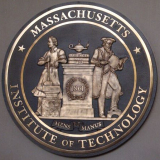
Massachusetts Institute of Technology
-
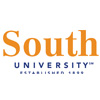
South University
-

University of West Georgia
-
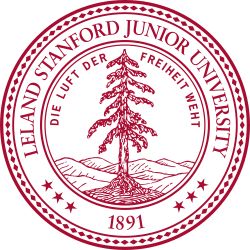
Stanford University
-
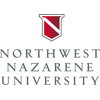
Northwest Nazarene University
-

Hawaii Pacific University
-

Shorter University
-

Nova Southeastern University
-
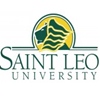
Saint Leo University
-

Mesoamerican University
-

Istmo University
-

Mariano Galvez University of Guatemala
-

Regional University of Guatemala
-

Galileo University
-

Francisco Marroquín University
-

Rafael Landívar University
-

University of the Valley of Guatemala
-

University of San Carlos of Guatemala
-

Technological Institute of Tlaxcala Plateau
-

Golfo University
-

Technological University of South Sonora
-

Technological University of Huejotzingo
-

Tizimín Institute of Technology
-

Chilpancingo Institute of Technology

